Growing the Future!
By Holly Frainer, Native Plant Horticulturalist, Pollinator Partnership
Growing the future! That phrase can encompass a multitude of meanings, yet, I hope your mind traveled to envisions of positivity! At Mason State Nursery, we are growing more than just plants here, we are growing relationships with other like-minded individuals that want to have a positive impact, we are growing awareness on why it is important to take care of our pollinators and their world, and we are growing our conservation efforts.
Hello, I’m Holly Frainer, and my time with Pollinator Partnership is spent as a Native Plant Horticulturist growing pollinator plants for a few different projects that promote the health of pollinators that are critical to food and ecosystems. I want to share with you a behind-the-scenes look at what goes on around a greenhouse.
Once all the seed has been cleaned to grow, and while the winter wonderland outside is cascading it’s bliss across the landscape, we are setting up shop to grow some healthy plant plugs. Our flats are scrubbed to ensure a clean environment to propagate. Believe it or not, the two pictures below were taken on the same day!
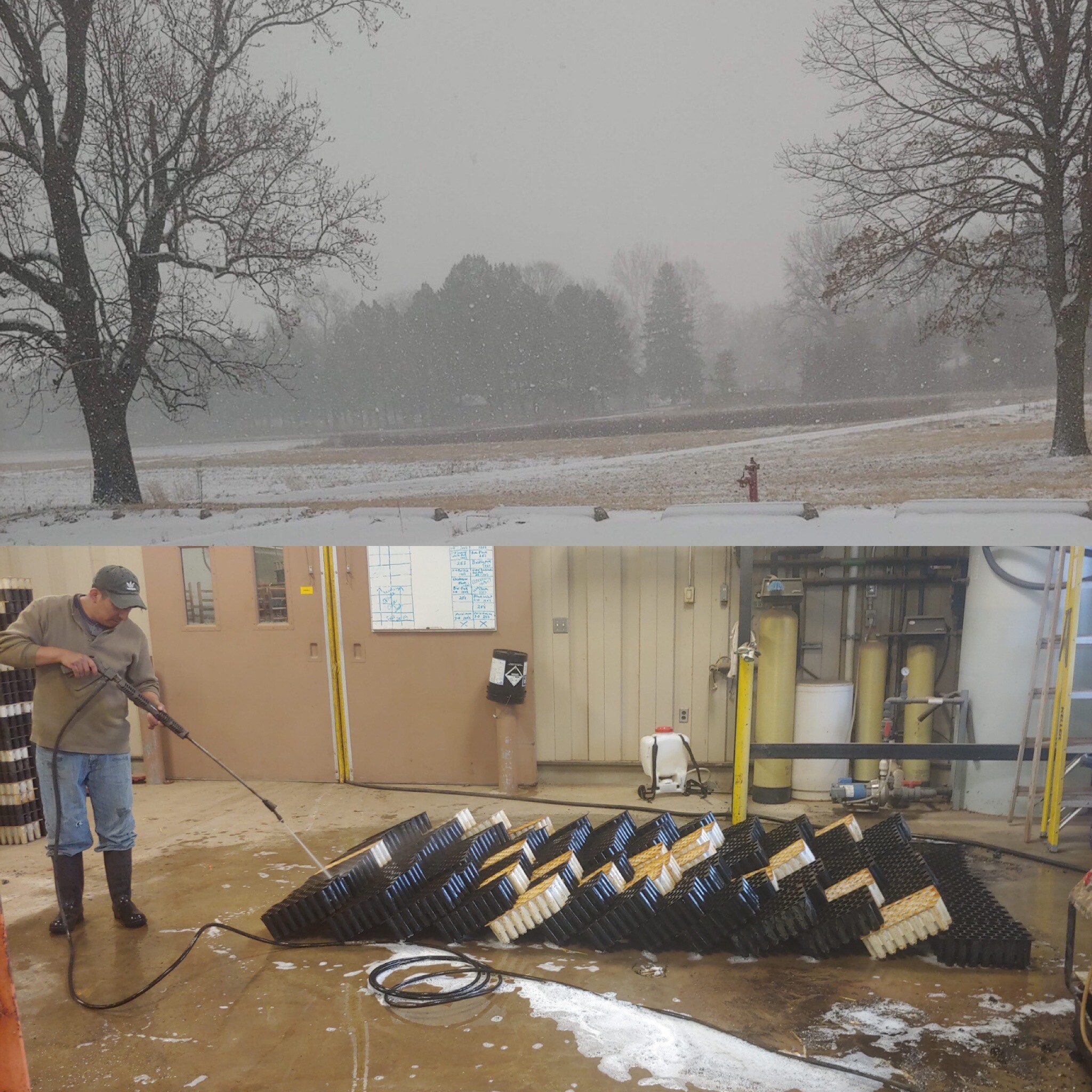
Brrr, that snowy picture looks cold! That’s the terrific thing about greenhouse work, you can make it sunny and warm any day of the week. Using varying stratification methods, the greenhouse has to be ready to go year-round, and it’s always exciting to see new plants pop up. Walking into the greenhouse every morning after seeding is like opening up a present every day. What sprouted up?!
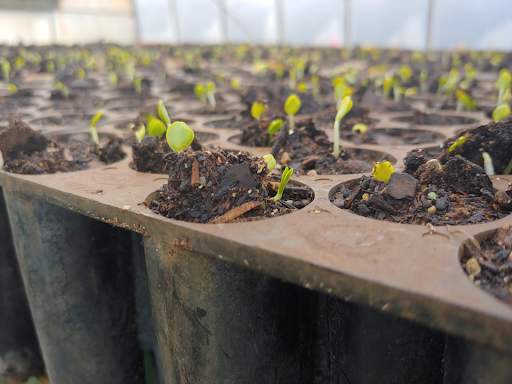
All flats are geospatially tagged by State, Zone for Project, and Species to keep organization throughout the greenhouse. You will see pictured here flats of Asclepias verticillata/Whorled Milkweed that was collected and grown for Northern Illinois. To learn more about the great work taking place through Project Wingspan visit (https://www.pollinator.org/wingspan).
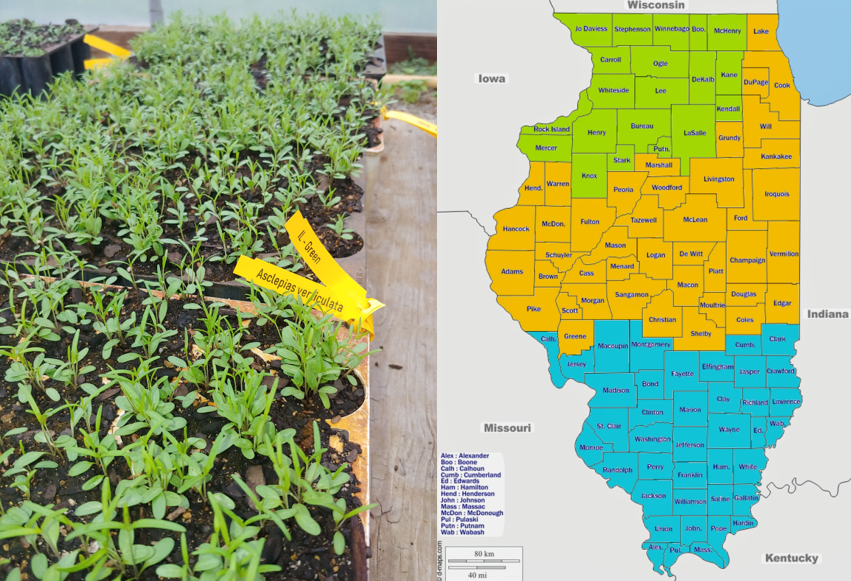
Once things really start to take off, you might think we just sit back and sprinkle water on the plants. Far from it! The next part is one of my favorite processes known as splitting plugs. I’m a heavy-handed seeder because not every seed will pop up. There will be some flats that look as if we forgot to plant some plugs, while other plugs can have multiple sprouts. That’s when I start splitting plugs. It’s a rather delicate process, but quite rewarding. This is where I take a plug that has multiple sprouts in it, gently massage the soil away from the roots, and begin to untangle the roots without ripping them. Then, I burrow out a spot in the vacant plug and plant the new roots. When practicing this, there needs to be at least a couple sets of true leaves on the plant or else it stresses the plant too much. I happen to find this activity relaxing. As you can see from the pictures, I am splitting plugs in the middle of the greenhouse; then you can see the plug I chose to split, and the plug completely separated getting about 5 additional plugs out of splitting just one plug.

Once the weather outside warms and no longer poses a threat to the tender plants, they are re-homed outside to get some natural elements such as sunshine, rain, and gentle breezes that helps them grow into stronger plants, sometimes even being used as an insect buffet as seen in the picture below with feeding swallowtail caterpillars!
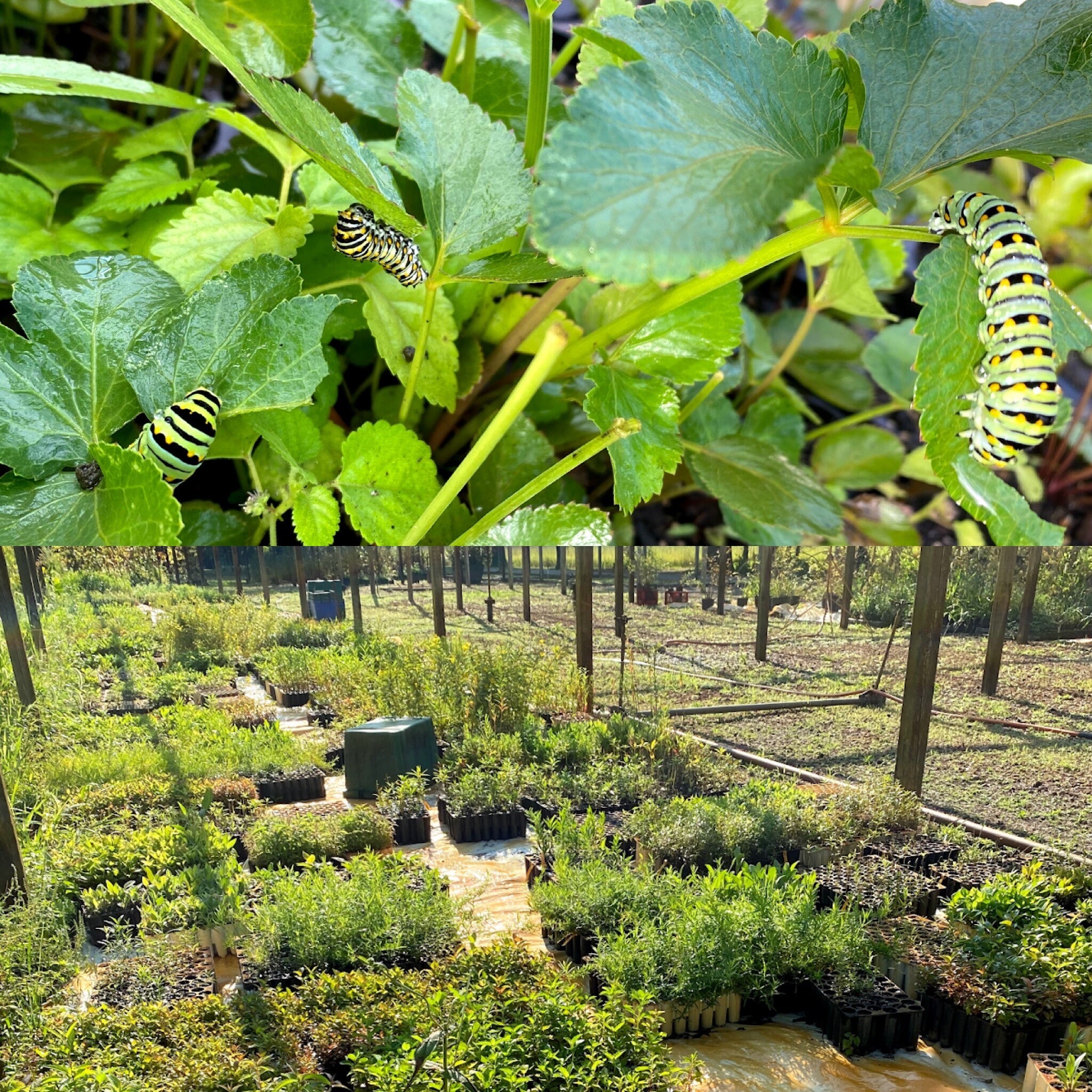
Plants really do have their own personality with some being over-achievers as well. Here is a picture of Eupatorium perfoliatum/Common Boneset. One plug clearly is standing tall among it’s peers!
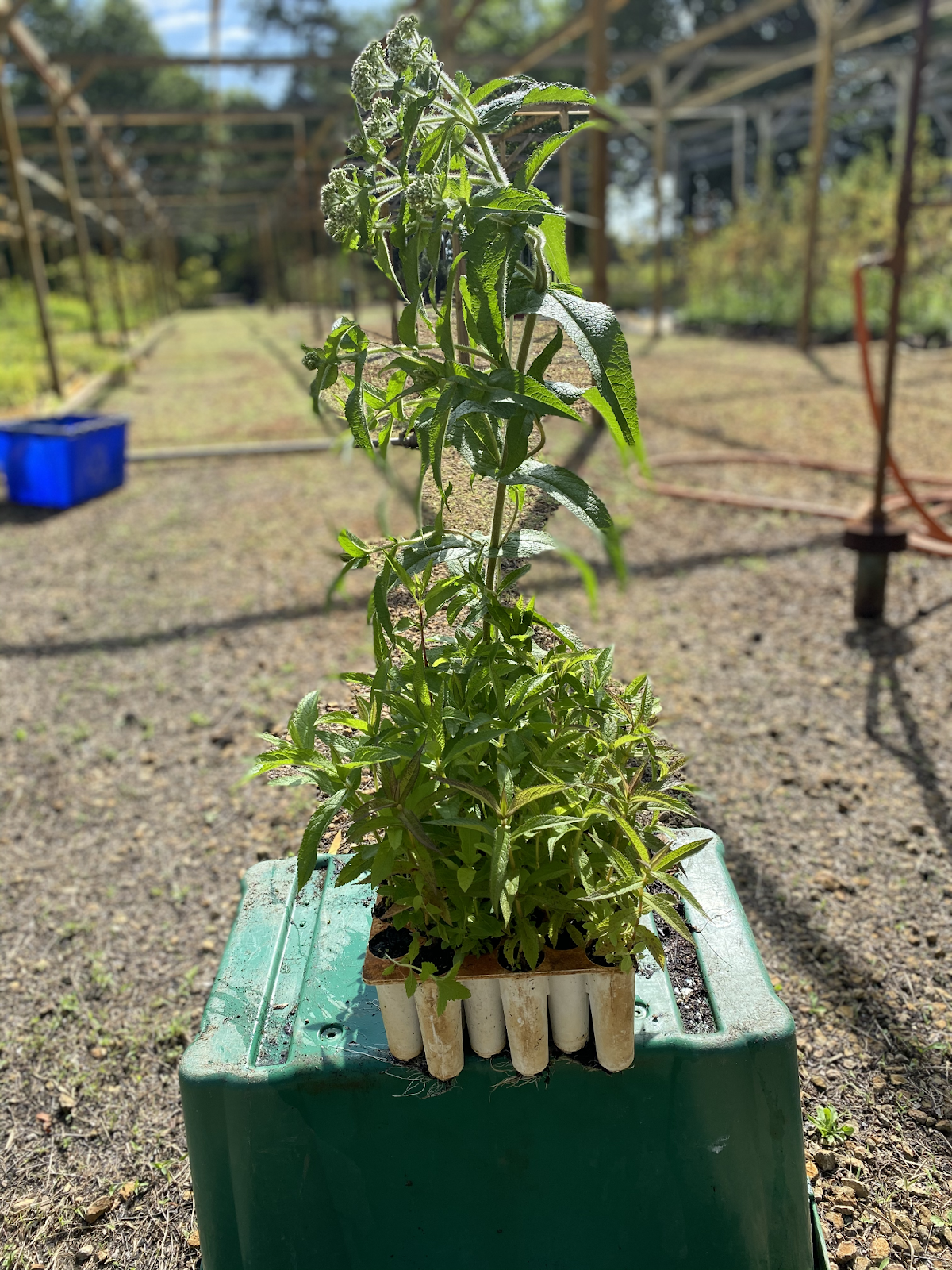
These plugs were grown for awards to Habitat Participants that engaged in Project Wingspan.
Once the plugs have gone through a season of growing, they are manicured to be put in the cooler for their dormancy period. We put the plugs into a dormant state to be able to package and ship the plugs to the awardees. The plugs are bagged and tagged with bundles of 25. The plugs are labeled with the originating State, Zone, and Species.
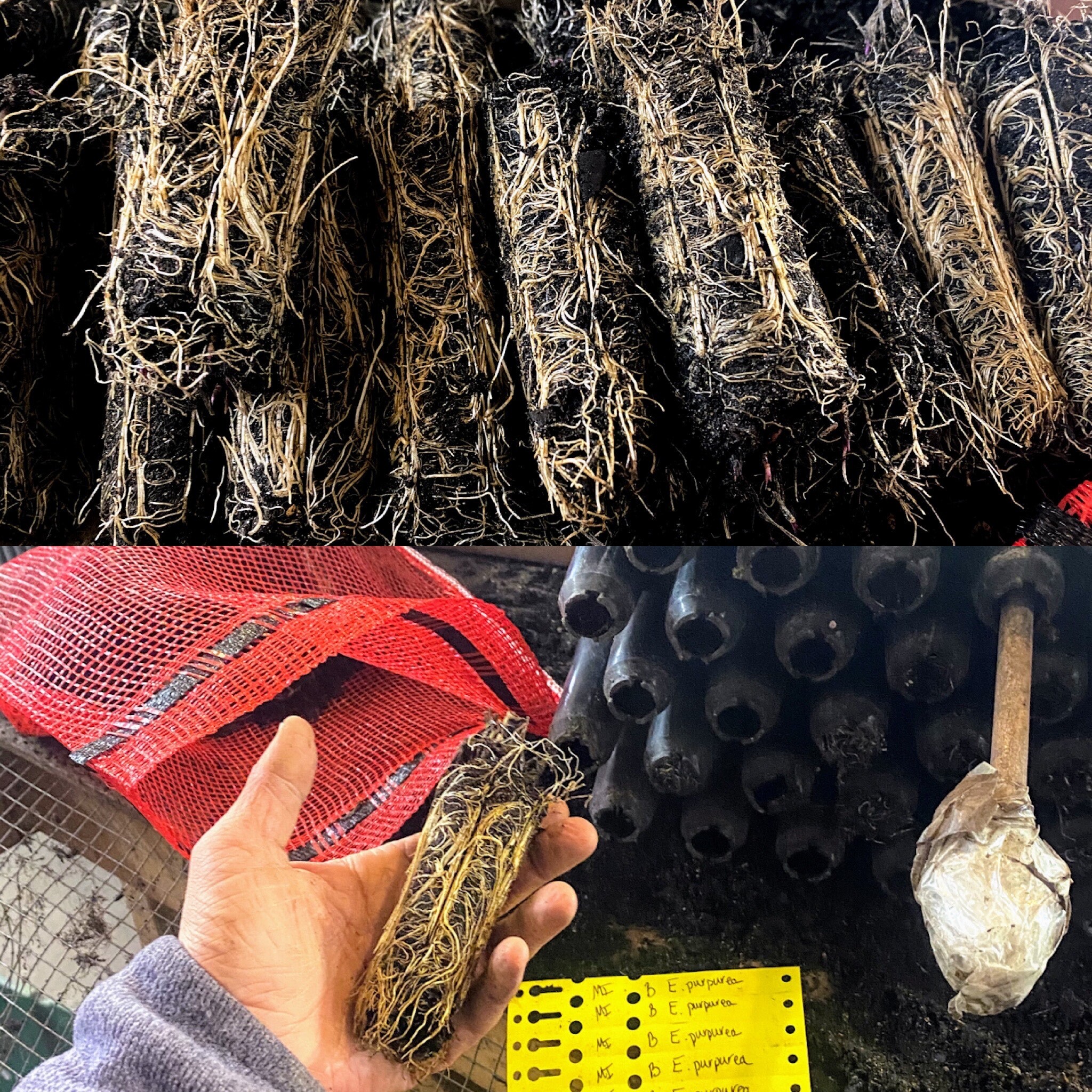
The awardees will then plant the plugs to help diversify their landscape for pollinators. And now it’s time to start the process all over again. Happy Planting!